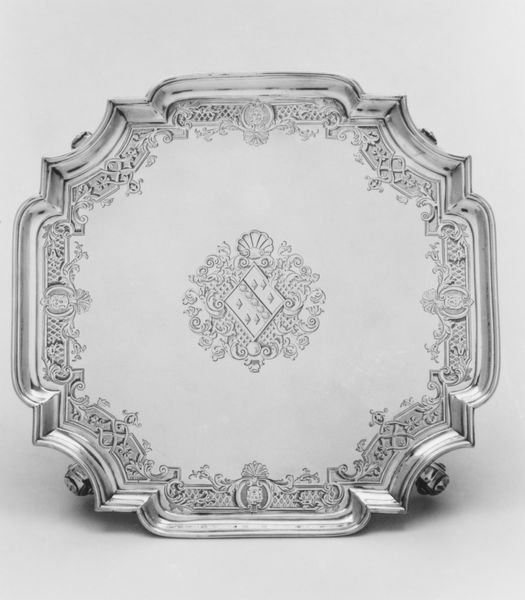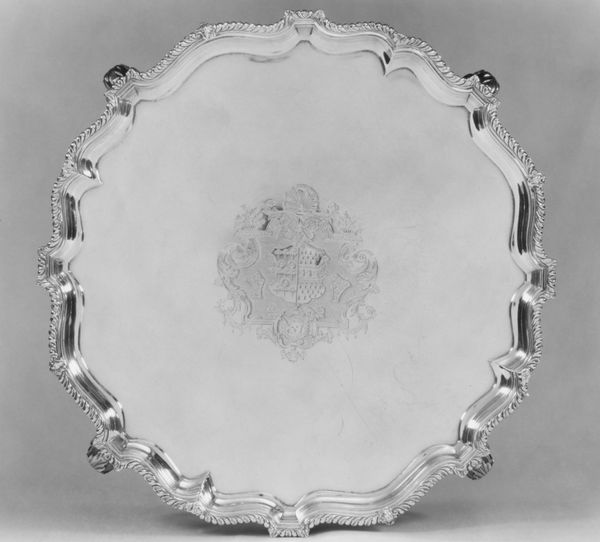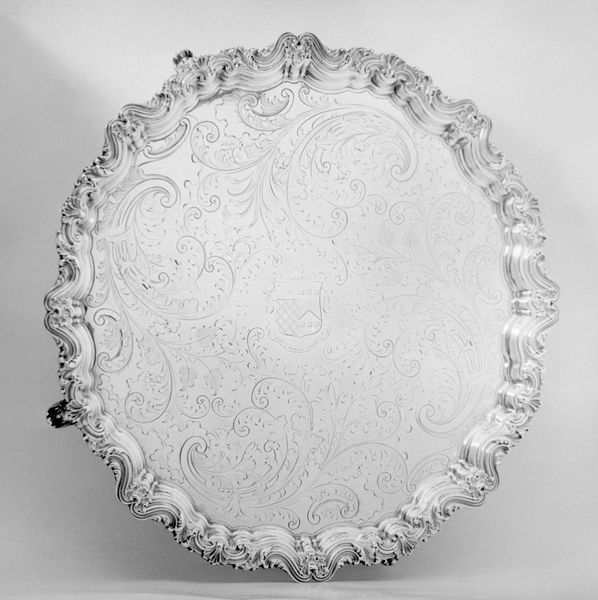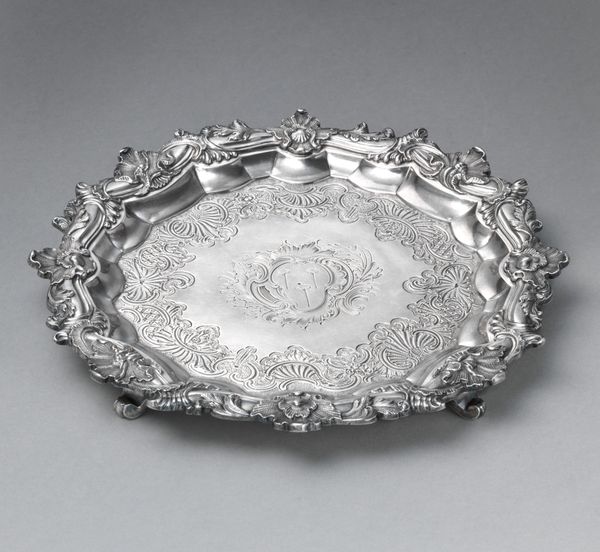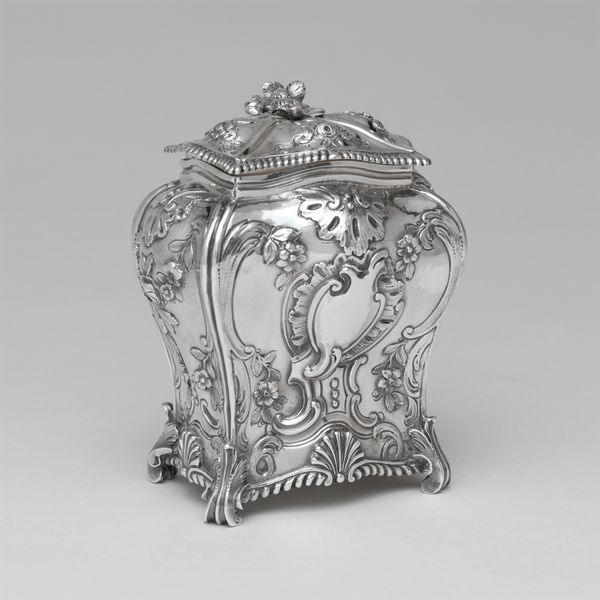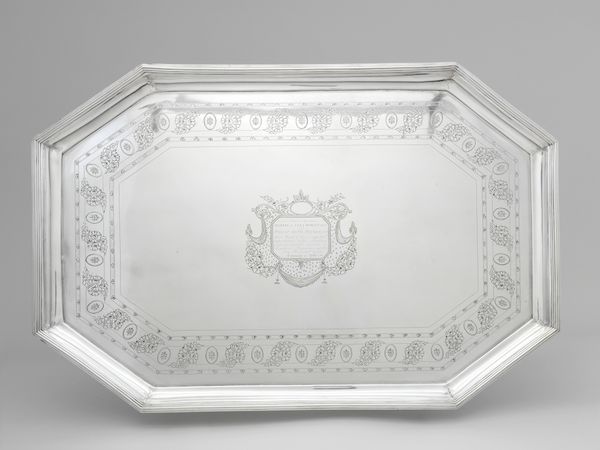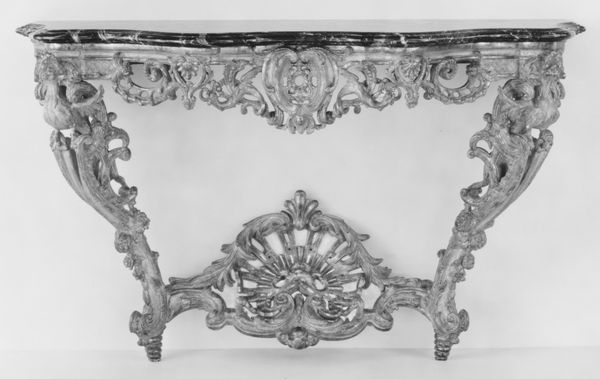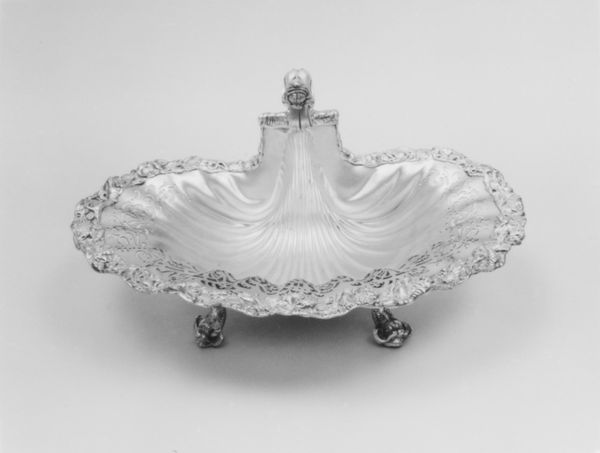
silver, metal, metalwork-silver, sculpture
#
silver
#
baroque
#
metal
#
decorative
#
metalwork-silver
#
3d shape
#
sculpture
#
decorative-art
Dimensions: Overall (confirmed): 1 1/4 x 10 1/2 x 10 in., 29.436oz. (3.2 x 26.7 x 25.4 cm, 834.5g)
Copyright: Public Domain
This silver salver for a teakettle was crafted by Augustin Courtauld, a Huguenot silversmith working in England in the early 18th century. The piece reflects the intertwined social and economic history of the period. Consider how the triangular form, ornate rococo decoration and heraldic shield embody aristocratic taste. Silversmiths like Courtauld catered to wealthy families eager to display their status through elaborate household objects. Yet, the salver’s function also points to the growth of global trade, as tea became a fashionable commodity imported by the East India Company. Courtauld's background is significant; Huguenots like him brought new skills and styles to England after fleeing religious persecution in France. Analysing silver marks and family papers can help us understand the patronage networks and workshop practices behind objects like this. It reminds us that seemingly simple artifacts can reveal complex stories about trade, migration, and social identity in the Georgian era.
Comments
No comments
Be the first to comment and join the conversation on the ultimate creative platform.

